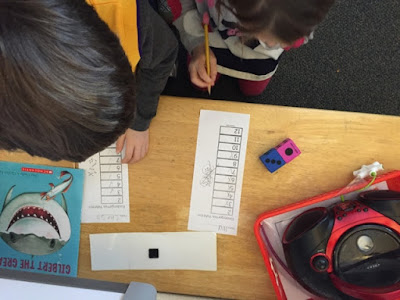Will students make mistakes in these exercises? Absolutely and I hope that they do, these are amazing opportunities for conversations about their thinking and opportunities for the students to problem solve. Often times, the peer conversation is more powerful than the teacher to student conversation. Peers love to teach, support and problem solve with their classmates.
 |
| Here a student uses a number line to help solve the addition problems. Students write the equation under the picture and practice the skill of counting on to find the sum. |
 |
| This student is practicing writing equations to match the dominoes. Students finish a row and check in with a neighbor to check their thinking. |




















































